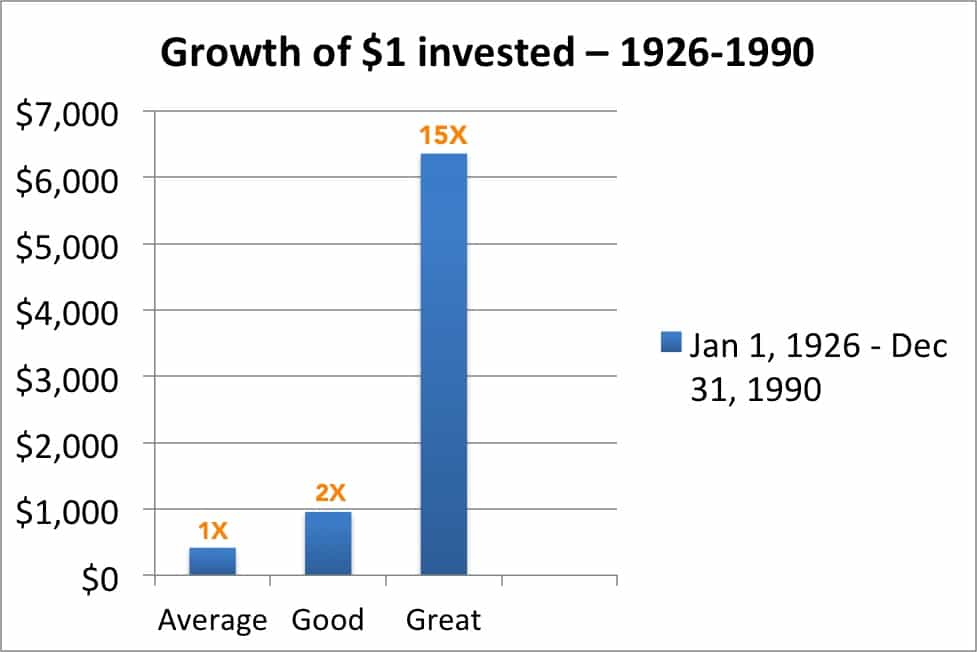Why do only a few companies have Super Bowl sized profits, while the rest never make it to the top level of competition? What do these super successful companies know that the rest of us do not? I asked myself these questions when I was trying to grow our business. And the answers I found should bring hope to any struggling organization!

Reality check
In case you are wondering about the rarity of Super Bowl sized winning companies, lets look at some research that defines the spectrum of company performance in the US.
In his book, Built to Last, Jim Collins dug into the historical performance of hundreds of companies. Collins looked at some of the United States’ most successful corporations, many dating back to the 1800’s.
In his search to understand what created ‘Visionary’ organizations, he placed each company into one of three categories:
- Great or Visionary (extraordinary, enduring ‘Super Bowl’ companies)
- Good (comparison companies that were in similar industries as the visionary companies but fell short of visionary companies)
- Average (reflecting the stock market)
Collins contrasted the three types of companies by showing what $1 invested on Jan 1, 1926 would grow to by December 31, 1990. Here’s what he found:
From 1926 to 1990, your investment in the good companies would have earned two times more than the general/average stock market – which is pretty good.
But your investment in the enduring, great visionary companies would have been 15 times greater than the general/average stock market.
WOW!!! So what made these enduring, great visionary companies different?
Before I answer that question, let me share about my own experience.
The Albert Companies
At our company, we definitely are not perfect, but over time, we got more intentional about creating a great, and enduring company.
From 2005 (that fall I introduced our company core values) through 2011 (the year I sold our company), we saw the following results during some of the toughest economic times:
- Revenue grew about 5 times
- Profit increased slightly more than 5 times
- The first two times we applied, we were awarded the 100 Best Companies to Work For in Texas the years 2011 and 2012.
Our company experienced significant growth during a time when many other companies were declining.
Every leader can create a Super Bowl level organization by focusing on two areas in their business.
Preserve the Core and Stimulate Progress
Collins discovered that the enduring, great visionary companies did two things very well. The author summed it up by stating that visionary companies:
- Preserved the Core – the organization’s Core Ideology was fanatically protected and never changed.
- Stimulated Progress – by endlessly adapting their business and operating practices.
Over time, these visionary companies changed almost everything, like: policies, procedures, product lines, competencies, organization structure, reward systems, strategies, tactics, and performance goals.
But the one thing that they did not change was their Core Ideology. Collins defined “Core Ideology” as core values + purpose.
Shocking Fact: Visionary companies are generally more ideologically-driven and less purely profit-driven.
My Journey
While I studied Jim Collins’ books, Built to Last and Good to Great, and thought about my own company, I started to realize that my search for our beliefs, or core values, was a key part of achieving significant and sustainable growth.
As the leader, I learned that it was important for me to identify and champion our own core values.
The statement that propelled me into a deeper discovery of my core values was…
I want to be a Values-Driven Company that achieves results; not a Results-Driven Company that has values. ~Bobby Albert
What I have now learned is that every company has values, even if they haven’t been discovered yet.
I have also found that most companies are Results-Driven and not Values-Driven.
Is your organization competing at the Super Bowl level? How do you keep your focus on values while you strive for results? Please let me here your thoughts by leaving a comment <here>.

